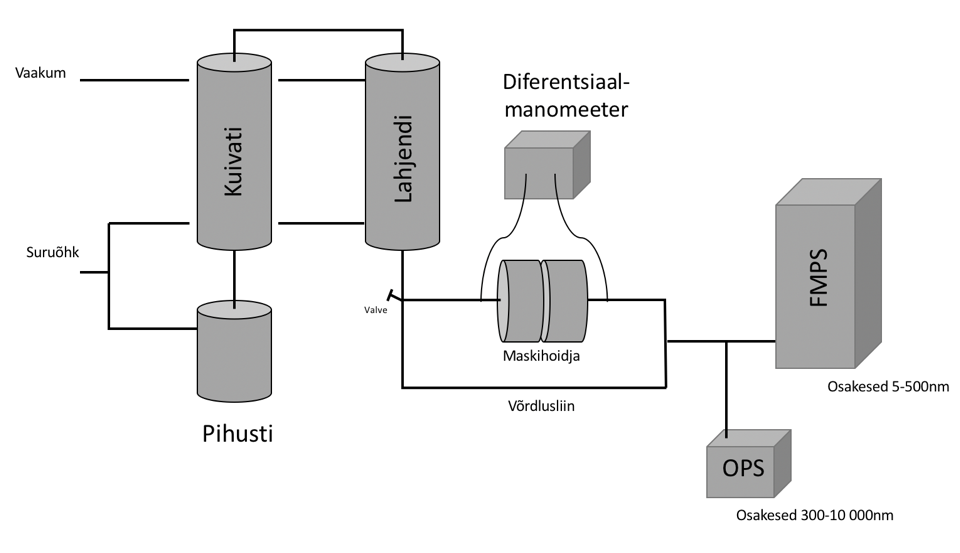Mask testing methodology
What is the rating of the mask?
The mask rating number is an indicator, developed by us, its purpose is to describe several important properties of a mask by one number. The properties included are 1) the mask's ability to catch (filter) particles of different sizes and 2) the mask's breathability (in other words, how easy / difficult it is to breathe through the mask). The rating is calculated by the following formula.
$$H = \frac{W_1E_{100\mathrm{nm}} + W_2E_{300\mathrm{nm}} + W_3E_{3000\mathrm{nm}} +W_4E_{h}}{W_1+W_2+W_3+W_4}$$
Where E is the filtration efficiency for the particle size indicated in the subscript, Eh is the breathability (in physical terms: the inverse of the normalized pressure drop at the mask), and W1=5, W2=15, W3=30, W4=50 are the weights of the specific properties of the mask. The weights (W1-W4) used to calculate the rating (H) were determined in such a way that a well- rated mask would provide good overall protection. 100 nm particles, this virus-sized particles are rated the least important because the virus alone is unlikely to fly in the air, and if it does, the number of these particles is small. The filtration capacity of particles of this size affects the rating by 5%. The most "cunning" aerosol, 300nm, received 15% weight, such particles are the most difficult to filter out and these particles penetrate deep into the lungs and they also fly in the air for a very long time, but these particles are the easiest to remove by a good ventilation. The largest particles (3000nm) determine 30% of the rating.
Since the mask protects only when it is in use, we highly rated the breathability of the mask, it is the most important term in the formula. A mask that is difficult to breathe through, even though it can filter out most of the particles, is likely useless. We cannot breathe through such a mask for a long time, rather we take off the mask and then we become completely unprotected. At the same time, a mask with good breathability, although perhaps with somewhat poorer filtering ability, is much more convinient to wear for a long time and then we are generally better protected. Breathability received 50% weight.
How we performed the tests?
Salt particles (NaCl) sprayed from 0.2 molar saline were used to produce a fine aerosol (100 nm and 300 nm), and polystyrene latex calibration aerosol (3 μm) was used to obtain larger particles. The spray particles were dried in a silica gel dryer and then the dry aerosol was diluted by clean air and then directed to flow through the test material. Particles were counted with two devices, FMPS (Fast Mobility Particle Spectrometer, TSI Incorporated) and OPS (Optical particle sizer, TSI Incorporated). The first device measured the particles of 100 and 300 nm and the second one measured the particles of 3000 nm.
